1.利用instanceof运算符判断一个对象是否可以转换为指定的类型:
public class TestInstanceof { public static void main(String[] args) { //声明hello时使用Object类,则hello的编译类型是Object,Object是所有类的父类 //但hello变量的实际类型是String Object hello = "Hello"; //String是Object类的子类,所以返回true。 System.out.println("字符串是否是Object类的实例:" + (hello instanceof Object)); //返回true。 System.out.println("字符串是否是String类的实例:" + (hello instanceof String)); //返回false。 System.out.println("字符串是否是Math类的实例:" + (hello instanceof Math)); //String实现了Comparable接口,所以返回true。 System.out.println("字符串是否是Comparable接口的实例:" + (hello instanceof Comparable)); String a = "Hello"; //String类既不是Math类,也不是Math类的父类,所以下面代码编译无法通过 //System.out.println("字符串是否是Math类的实例:" + (a instanceof Math)); } }
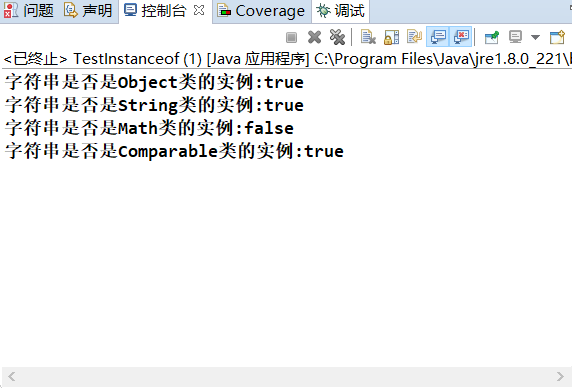
2.继承
class Grandparent { public Grandparent() { System.out.println("GrandParent Created."); } public Grandparent(String string) { System.out.println("GrandParent Created.String:" + string); } } class Parent extends Grandparent { public Parent() { //super("Hello.Grandparent."); System.out.println("Parent Created"); // super("Hello.Grandparent."); } } class Child extends Parent { public Child() { System.out.println("Child Created"); } } public class TestInherits { public static void main(String args[]) { Child c = new Child(); } }
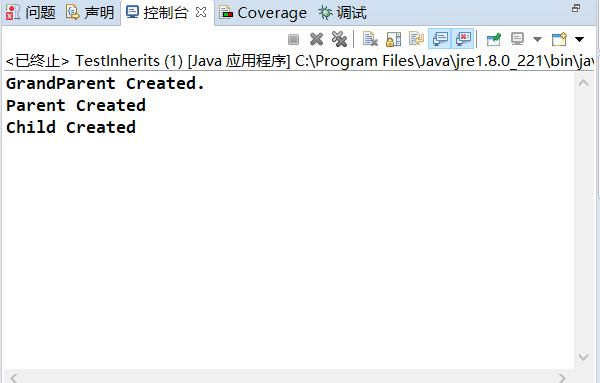
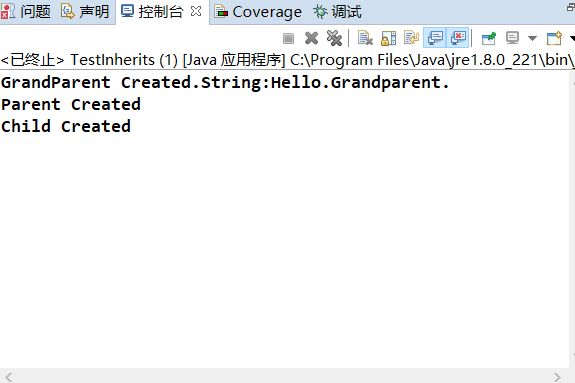
通过 super 调用基类构造方法,必须是子类构造方法中的第一个语句。
3.不可调用的类
以final声明的方法不允许覆盖。
以final声明的变量不允许更改。
创建“不可变的类”的对象后,此对象的属性不可改,而且也无法从此类派生出新子类。String就是一个典型的例子。
不可变的“类”有何用?
可以方便和安全地用于多线程环境中,
访问它们可以不用加锁,因而能提供较高的性能。
public final class Address { private final String detail; private final String postCode; //在构造方法里初始化两个实例属性 public Address() { this.detail = ""; this.postCode = ""; } public Address(String detail , String postCode) { this.detail = detail; this.postCode = postCode; } //仅为两个实例属性提供getter方法 public String getDetail() { return this.detail; } public String getPostCode() { return this.postCode; } //重写equals方法,判断两个对象是否相等。 public boolean equals(Object obj) { if (obj instanceof Address) { Address ad = (Address)obj; if (this.getDetail().equals(ad.getDetail()) && this.getPostCode().equals(ad.getPostCode())) { return true; } } return false; } public int hashCode() { return detail.hashCode() + postCode.hashCode(); } }
4.
package cn.bjc; public class ExplorationJDKSource { /** * @param args */ public static void main(String[] args) { System.out.println(new A()); } } class A{}
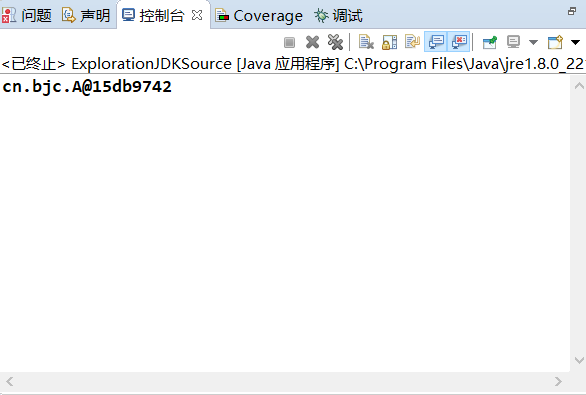
main方法实际上调用的是:
public void println(Object x),这一方法内部调用了String类的valueOf方法。
valueOf方法内部又调用Object.toString方法:
public String toString() {
return getClass().getName() +"@" +
Integer.toHexString(hashCode());
}
hashCode方法是本地方法,由JVM设计者实现:
public native int hashCode();
5.Fruit.java
public class Fruit { public String toString() { return "Fruit toString."; } public static void main(String args[]) { Fruit f=new Fruit(); System.out.println("f="+f); System.out.println("f="+f.toString()); } }
在“+”运算中,当任何一个对象与一个String对象,连接时,会隐式地调用其toString()方法,默认情况下,此方法返回“类名 @ + hashCode”。为了返回有意义的信息,子类可以重写toString()方法。
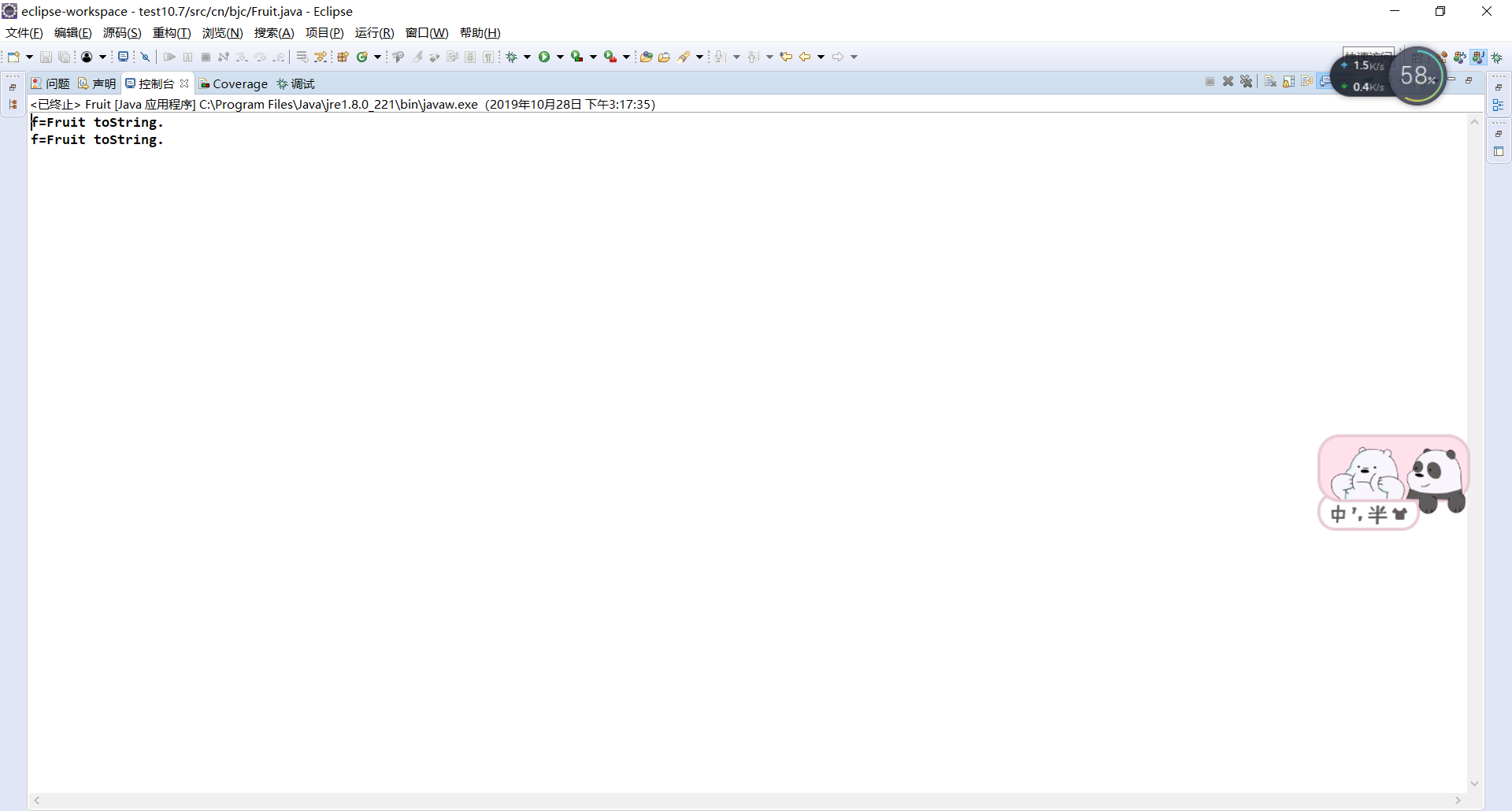
6.多态
多态的最本质特征就是父类(或接口)变量可以引用子类(或实现了接口的类)对象。换句话说:子类对象可以被当成基类对象使用
7.类型转换
子类对象可以直接赋给基类变量。
基类对象要赋给子类对象变量,必须执行类型转换,
其语法是:
子类对象变量=(子类名)基类对象名;
也不能乱转换。如果类型转换失败Java会抛出以下这种异常: ClassCastException
package cn.bjc; class Mammal{} class Dog extends Mammal {} class Cat extends Mammal{} public class TestCast { public static void main(String args[]) { Mammal m; Dog d=new Dog(); Cat c=new Cat(); m=d; //true //d=m; //false d=(Dog)m; //true //d=c; //c=(Cat)m; } }
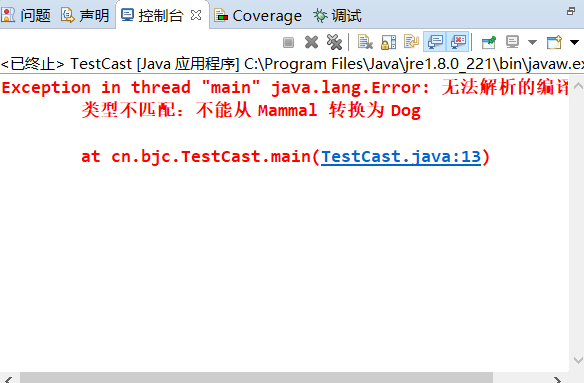
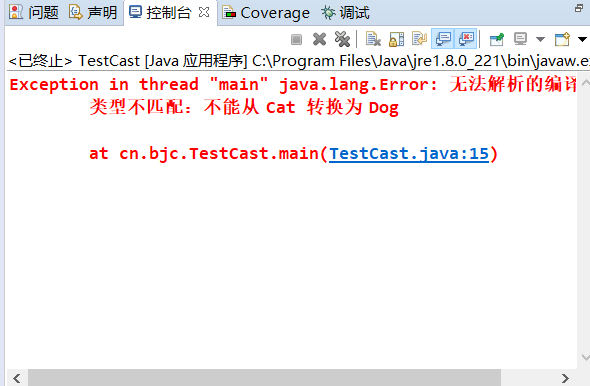
8.
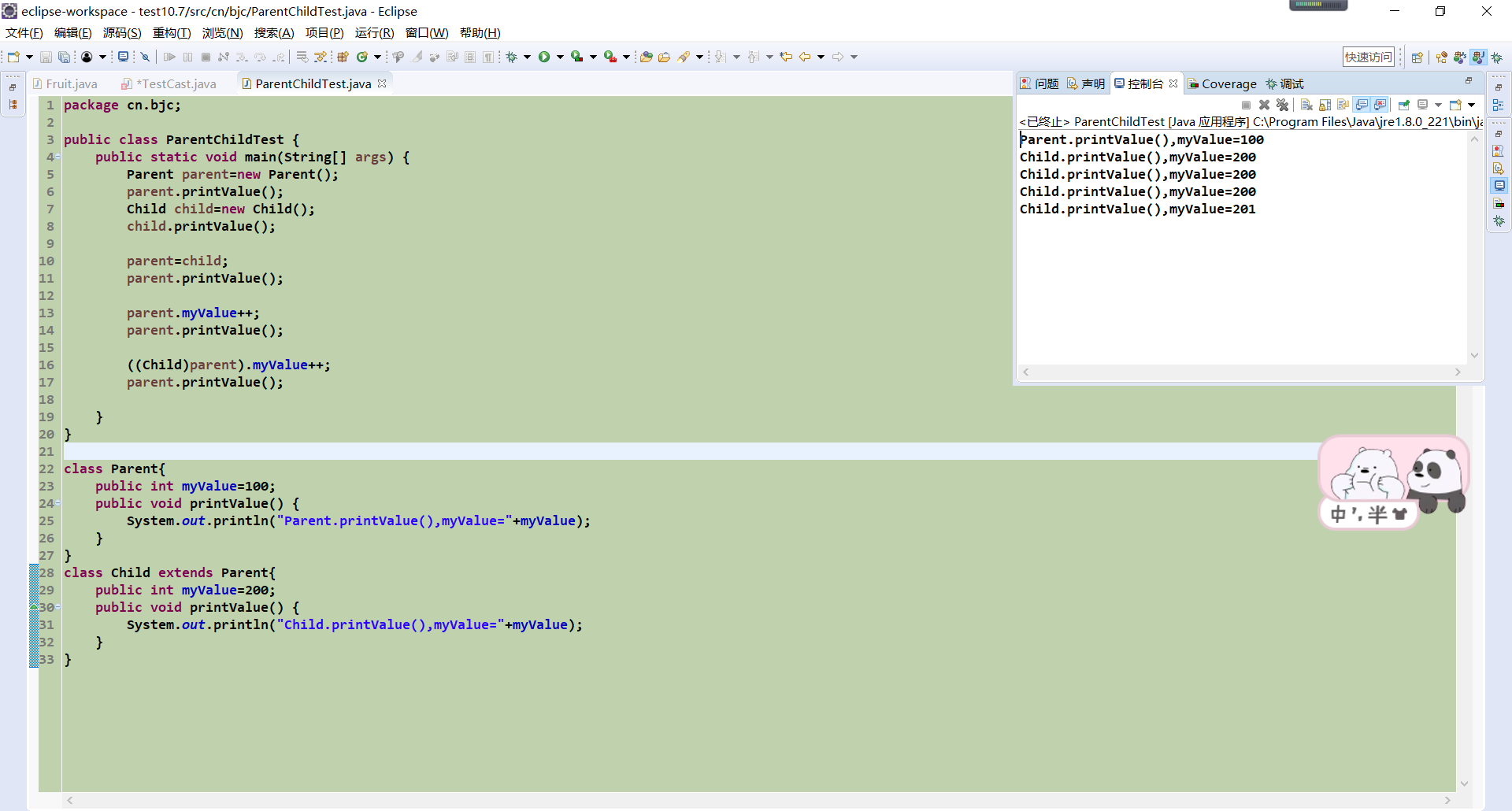
9.
package cn.bjc; class Parent2 { public int value=100; public void Introduce() { System.out.println("I'm father"); } } class Son extends Parent2 { public int value=101; public void Introduce() { System.out.println("I'm son"); } } class Daughter extends Parent2 { public int value=102; public void Introduce() { System.out.println("I'm daughter"); } } public class TestPolymorphism { public static void main(String args[]) { Parent2 p=new Parent2(); p.Introduce(); System.out.println(p.value); p=new Son(); p.Introduce(); System.out.println(p.value); p=new Daughter(); p.Introduce(); System.out.println(p.value); } }
